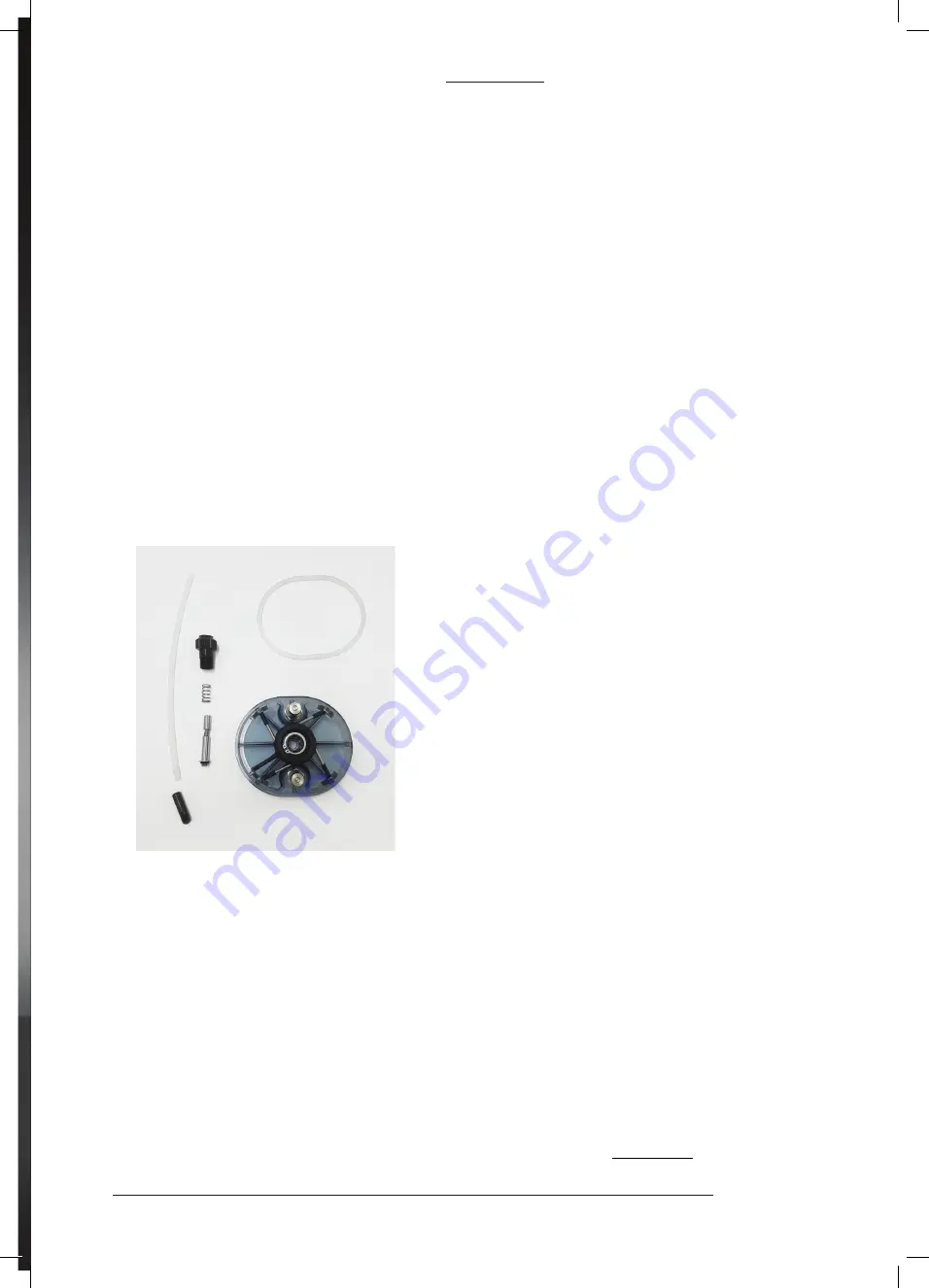
4
BREWING INSTRUCTIONS
CLEAN
The cleaning process requires the BrewKeg50
TM
and all
parts to be: cleaned with cold water (removing all visible
brewing residues), washed with Brewery Detergent (removing
unseen build up), rinsed (removing all Brewery Detergent
residue), and sanitised with boiling water. Once this is done
you are ready to mix in your ingredients.
01.
Boil 2L (0.5 gal.) of water, ready for use later.
02.
Disassemble BrewKeg50
TM
into individual parts:
lid, silicon lid seal, Variable Pressure Relief Valve
(VPRV), beer tube, black anti-block fitting (on
end of plastic beer line) and all base components
of the bottom half of the sediment bottle.
03.
In a sink, jug, or small bucket, add 1 teaspoon
(0.17 fl. oz.) of detergent per litre of hot tap water.
Soak all disassembled lid parts and sediment
bottle components in hot water, wiping clean with
the non-scratch sponge to remove any visible
yeast/krausen/hops residue of previous brew.
04.
Rinse the entire BrewKeg50
TM
with cold water
over a drain or sink. Using the non-scratch
sponge remove the yeast ring, krausen and
hops residues at the BrewKeg50
TM
fill mark. Pay
special attention to the underside of the seal area
and bottom valve area. Turn the BrewKeg50
TM
over and clean the underside of the bottom valve
and sediment bottle component. Ensure it is
thoroughly clean before closing the bottom valve
and pouring a small amount of boiling water
into the underside of the closed bottom valve
fitting to sanitise.
05.
Return to upright position and re-rinse with
cold water. Open the bottom valve to drain
excess water.
06.
Re-assemble lid, beer tube, anti-block fitting,
and VPRV. Ensure the anti-block opening is
facing inward and beer tube is inserted firmly
into the lid beneath the correct port (Liquid
Port marked ‘L’).
07.
Turn the VPRV to fully closed position.
08.
Install sediment bottle and fill BrewKeg50
TM
with 3L (3 qt.) of hot water and add 2 teaspoons
(0.34 fl. oz.) of brewery detergent. Wipe interior
stainless-steel surfaces of BrewKeg50
TM
with
non-scratch sponge.
09.
Fill jug again and boil 2L of water (0.5 gal.),
ready for use later.
10.
Install lid with silicon seal properly. The small
tabs on the silicon seal should line up with the
seams down the long length of the lid. Shake
vessel upright, inverted, and on its side for at
least 10 seconds.
11.
After every 4-5 uses of the BrewKeg50
TM
it
is a good idea to run the Brewery Detergent
through your Beer taps. Attach draft beer taps
and flush beer line and beer out port with the
hot detergent.
NOTE: Enough pressure should build up via shaking
of boiling water in the BrewKeg50
TM
to allow flushing of
the beer line. If there is not enough pressure, attach
CO
2
gas cylinder Gas-Disconnect (Grey) to the gas port
(marked with a ‘G’ on the lid) and pressurise slightly to
0.3 bar (5 psi). The correct methods for connecting and
disconnecting your gas and liquid disconnects to your
BrewKeg50
TM
lid can be found in the
Video Resources
on the WilliamsWarn website.
Fig 1: Disassembled BrewKeg
TM
Lid
Summary of Contents for BrewKeg50
Page 16: ......
















